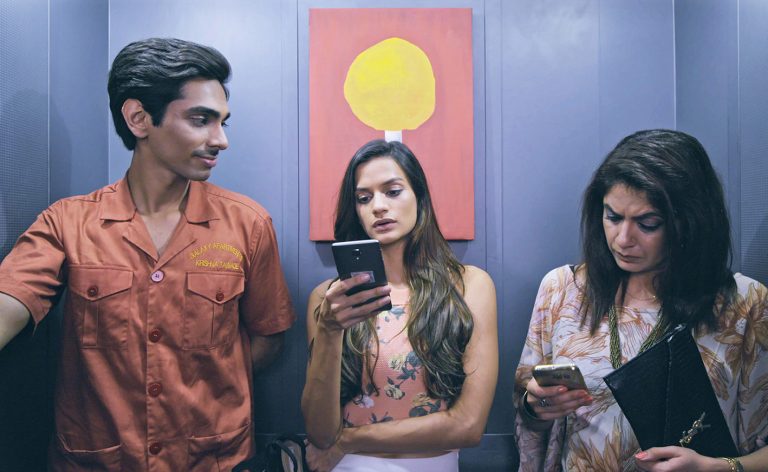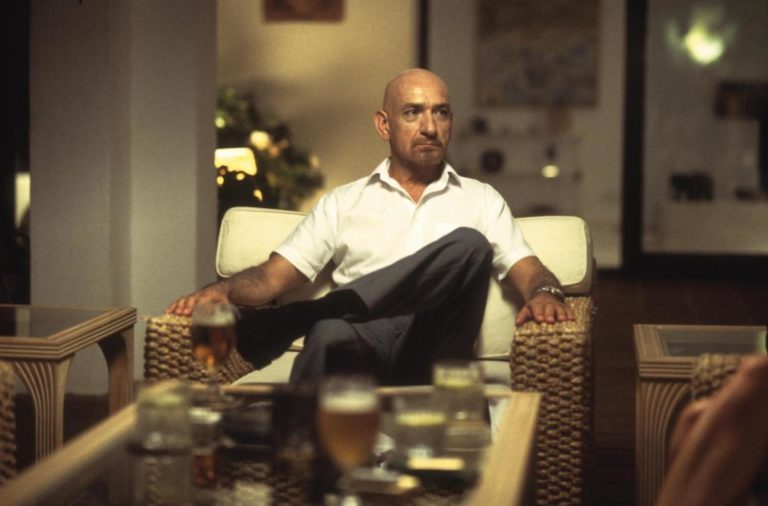The unique style and avant-garde narrative voice of award-winning film director Rituparno Ghosh have not escaped the eyes of Bengali movie lovers. However, what he does in his movie Shubho Mahurat (2003) is absolutely path-breaking and doesn’t fail to grip the audience’s attention.
The film can be called intertextual as it is a film within a film talking about another film. Opening with the mahurat shot of a film being produced by former actress and NRI Padmini Choudhuri (Sharmila Tagore), who comes back to Kolkata to produce a film that will be directed by his second husband, Sambit Roy. The film’s opening track establishes that Padmini is fond of a fellow actress Kakoli Sinha (Kalyani Mandal), and is determined to take her as the film’s lead.
For the first time, Ghosh ventures on to create a whodunnit based on Agatha Christie’s The Mirror Crack’d from Side to Side (1980). From Byomkesh to Feluda, Bengali Literature and Bengali Cinema have had a repertoire of detectives and detective films but owing to Ghosh’s signature style; this film is starkly different. Ghosh brings in the inner turmoils of the characters. He deals with complex emotions of anger, love, jealousy, and hatred but in a much more mature way.
A young journalist Mallika (Nandita Das), who lives with her aunt whom she calls Ranga Pishi ( Rakhee Gulzar) in Kolkata, is asked to cover the mahurat event, and there she learns from freelance photographer Subhankar (Anindya Chaterjee) that life in the film industry is not as glamorous as it seems from outside. Many layers are revealed in this sequence as different kinds of characters are introduced, and just like a typical whodunnit structure, a preface is established for a possible turn of events.
It is interesting to note that Ghosh pays attention to characters from different strata of society and depicts a constant socio-economic skirmish that ultimately creates tension. The use of dark tones, reflections, shadows, and well-thought-out color patterns for different characters is rather interesting. The omnipresence of darkness and shadows throughout the film almost portrays the ghost of the past haunting the characters. The juxtaposition of lavishness and extreme poverty in the same frame is evidence of Ghosh’s sensitivity towards class struggle and prevailing inequalities in the film industry.
The narrative picks up the pace when Kakoli dies in her house. Initially, it is said that she died of a drug overdose but then it was revealed that she was poisoned. As the investigation moves forward, several dark chapters of the past are reopened. It almost seems that Ghosh employs the method of ‘collective memory‘ as given by Michael Rothberg, to unravel the past and put it together to reach a conclusion. Using the camera as a motif also plays a role in the narrative as it captures the moment however the memory is not photographic in nature.
Another significant aspect of this film is the role of the women, Rituparno Ghosh gives ample agency to women in the narrative, and the actions of these female characters drive the entire film; the men seem to support them merely. The death of Kakoli, the love life of Mallika, the boldness and intelligence of Ranga Pishi, or the uprightness of Padmini. These women seem to be driving home the point of independence for women to make their life decisions. Even minor characters such as Pramila and Kalpana don’t fail to make their importance felt during their limited screen time.
The issues of extramarital affairs, sexual assault, and abuse of women are also brought to the fore via Kalpana’s plight and her struggle to save her child, which forces her to blackmail Sunil and Padmini for money. Padmini’s memories of her dead child and Pramila being a naive, newly married woman who has no idea of Sunil’s extramarital affairs and is always abused by her husband. On the other hand, Mallika finds it difficult to choose one life partner out of Shubhankar and Arindam (Tota Roychoudhury) (Police Inspector), and herein Ghosh introduces a very unique way of depicting the equation of Mallika with both the men without raising any overt tension or extravagance.
Coming back to the murder, Kakoli is accused of being a druggist, and even after her death, her husband raises questions about her character only to hide his wrongdoings. Many suspects are drawn out, and it is interesting to note that all the people with lower economic status and less power are made scapegoats based on the perceptions of those in power. Ghosh’s artistic style is definitely not apolitical, as one might say.
Ranga Pishi can be rightly demarcated as Christie’s Miss Marple. She is a perfect blend of typical aged Bengali women with a huge amount of observation power and intelligence. She is very modern in her thought and becomes the perfect companion for Mallika. It is revealed that Ranga Pishi is a big fan of Padmini, and she follows each and every action of her. Ranga Pishi gives many clues and unravels several questions about this case, and helps Mallika and the police to gather more evidence.
Towards the end, Ranga Pishi reveals that this case brought her out of her kitchen and encouraged her to become a detective. Ghosh beautifully brings out the synergy between women of different ages, and it almost seems like a bildungsroman, especially for Ranga Pishi.
It should be brought to one’s attention that the end goal of Ghosh is not to punish the perpetrator through a traditional legal framework but to bring out the emotional rollercoaster within the characters and finally depict the reality of life. Its unfairness and dark overtones are brought to the fore, and ironically “Shubho Mahurat” isn’t auspicious anymore. It turns out to be a happy start of a destructive end wherein no one is the winner.
To conclude, it can be said that, unlike the other Bengali detective movies, the case is not explained in a room full of suspects. The murderer is caught but only for Ranga Pishi and the audience. The guilt and pain automatically reveal the truth and the harshness. Revenge burns in its own fire, and Ghosh almost do poetic justice both to the culprit and the film. Hence, Ghosh’s filmmaking style and innovative ideas bestow an evergreen narrative to the history of films.









